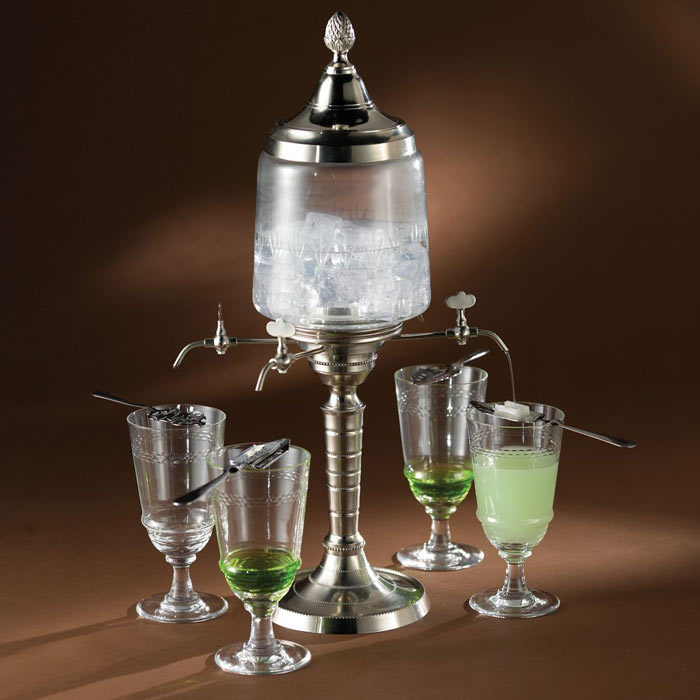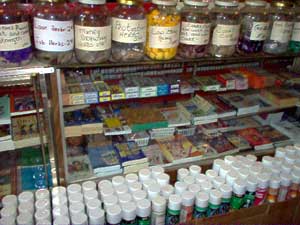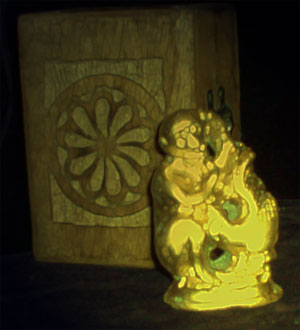
Tuesday, May 27, 2008
Sunday, May 25, 2008
Vieux Carre
If you want to attract something, bury it under the front door step
If you want to destroy its influence, burn it.
If you want it to move away and sink, throw it in running water
If you want to disperse it to a distance, throw it into a crossroads
If you want to fix its influence, inter it in a five-spot pattern
If you want it to work by means of spirits, bury it in a graveyard
If you want to hide its point of origin, conceal it in a tree
If you want it to work in secret, give it in food or drink
If you want it to work by stealth, hide it in clothing or on objects
If you want its influence to begin or strengthen, throw it East
If you want its influence to end or weaken, throw it West





“WHAT IS ROOTWORK? Rootwork is a form of folk magick that uses the elements of nature to create change in ourselves, others, or our environment. It is an African-American form of shamanism that makes use of herbs, stones, rocks, and other organic material to heal the body or the mind, or to solve a problem. Like all other forms of shamanism, Rootworkers believe that we can use the unseen forces of nature to manipulate the tangible world.
Rootwork is also known as ‘Hoodoo’ in the southern part of the United States. The word ‘hoodoo’ is probably derived from the word ‘juju,’ an African word meaning ‘magic,’ or from ‘Voodoo,’ a corrupted version of the Fon word ‘Vodun,’ meaning ‘spirit’ or ‘god.’ But unlike Vodun . . . Rootwork is not a religion. It has no pantheon or priesthood. It refers only to a set of healing and spell practices, and the practitioner can be whatever religion they wish.”
Tayannah Lee McQuillar (2003)

Hoodoo is a very strong part of the New Orleans folk magic tradition. Along with Voodoo and Santeria, it thrives in the diverse cultural “gumbo” that makes up this fascinating city. Most citizens of New Orleans either practice or intimately know someone who practices some form of rootwork, or hoodoo, on a regular basis. It is common in New Orleans and surrounding areas to seek out a “gris gris” for anything from good luck at the casinos or keeping pesky neighbors away, to potent “mojos” for sexual prowess and securing the affections of a potential lover. Hoodoo is also commonly used to curse one’s enemies.
Coexisting together, Hoodoo and Voodoo share many familiar elements. Though the latter probably influenced the former, many terms, spells and practices have a common connection. Hoodoo, however, is very informal; based largely on traditional African practices, it also drew heavily from Native American and other Nature-based folk traditions, such as those of the gypsies and Acadian “traiteurs.” Where Voodoo is an established religion with its own hierarchy and rituals, Hoodoo combines elements of most of the major belief systems – Christian, Jewish, and European folk practices, even elements of Southern Evangelical faith healing - all found their way into Hoodoo over time.
“HOW DOES IT WORK? No form of magick is based on logic – if it was, then it would cease to be magick. There is no explanation for why spells work, but they do. All that is needed to work successfully with spells is patience, confidence, and faith. It is a completely illogical process that must be allowed simply to be. As soon as you try to analyze it, its power is lost.”
Tayannah Lee McQuillar (2003)
Hoodoo places great emphasis on the magical power of the individual. Practices can be easily adapted based on one’s desires for a particular outcome; simple rituals also easily adapt to most people’s inclination and habits.
Hoodoo knowledge is generally passed person to person and because there is no particular structure within hoodoo, spells and practices are as numerous as practitioners. Many medicinal concoctions are geared toward use by hoodoo workers and significant use is also made of homemade potions and charms. Recipes for successful charms and potions have remained unchanged for generations.
Although it was the slaves who brought the African beliefs of Vodun and its hoodoo counterpart to the United States, in most areas of the country these practices died out or were absorbed into other area folk traditions. The exception to this is Louisiana, where hoodoo practices thrived among the slave population, distinct from those of Vodun or Santeria, which were hidden through syncretization with the Catholic religion. The African-Americans in Louisiana did not forget the vast magical and herbal knowledge that had been a part of their life in Africa. Thus, hoodoo was born.
Hoodoo in New Orleans is practiced under several names – Vieux Carre rootwork, Bywater conjure, Mid-City magick – but all share a similar origin and essential practices. With a rich mixture of Native American and traditional European folk belief thrown in, New Orleans hoodoo is unlike any other root religion in the south.
Despite being generally loosely organized, New Orleans hoodoo still has a number of taboos and rules in place that are strictly observed. Rootworkers in New Orleans made use of a wide range of charms, talismans and amulets designed to attract good luck, ward off bad luck, or in some way increase the power of the individual for whom they are made. These charms and talismans are usually prepared after careful consultation between the individual and the rootworker and once the charm is made and has been consecrated, no one else should handle it except the person it was intended for.
Charms, talismans and amulets come in many forms. The most popular rootwork charm is the “mojo” bag, “a tiny bag made of flannel, silk or leather that includes herbs, stones and other ingredients combined to achieve an objective.” The mojo is also often called “gris-gris,” especially among Voodoo workers, as well as “wanga,” “conjure,” or “trick bag.” The word “mojo” most probably comes from the West African/Yoruban word “mojuba,” which means “give praise.” Mojos are usually worn against the skin or carried in a pocket or purse and should always remain hidden.
Mojo and gris-gris bags are often prepared in occult shops or the popular “botanicas” that serve the thriving root business in and around New Orleans. Perhaps the most popular of these botanic markets is The Island of Salvation, owned an operated by Voodoo Priestess Sallie Ann Glassman. Another botanica, F&F Church Supply, carries many of the popular ingredients for mojos and gris-gris and also serves the popular Santeria practice in the City.
Other common mojo ingredients are taken from the natural environment and even from the human body. This is why it is vitally important never to allow anyone to touch or handle the consecrated mojo bag except the person for whom it has been created.
TALISMANS are also another important element of New Orleans hoodoo rootwork. Unlike their mojo cousins, most talismans are usually intended to be openly displayed either in an effort to attract a positive influence to the wearer or, alternately, to ward off negative influences such as evil conjure.
Talismans, or talisman ingredients, generally come from the natural world surrounding us, and everything from badger teeth to snakeskin has its proper place and influence in the hoodoo rootworker’s bag. Elements from the animal kingdom are often said to impart the powers of particular animals to the wearer, an example of the strong Native American influence present in hoodoo.

Other talismans are designed to bring increase to the bearer, and there are several popular talismanic devices of this sort. Probably the most famous and most sought after luck talisman of the New Orleans hoodoo tradition is the Golden Monkey and Cock Curio Statue.
The history of the Monkey and Cock Statues go back generations in New Orleans and have been associated with the secret practices of the societies founded by Voodoo Queen Marie Laveaux. In the New Orleans of today, the Sacred Gold Monkey and Cock Statues are hand carved by Bianca and members of the societies and then covered with 18 karet gold plate paint of superior quality actually resembling metal plating and each comes in a wooden box . Then Good Luck curio are individually blessed by Bianca, the reigning Queen of New Orleans Voodoo, in ritual blessing ceremonies held twice yearly.
Small plaster Monkey and Cock statues have been appearing at the grave of Voodoo Queen Marie Laveau for years and these more common Monkey and Cock statues are said to grant three wishes to the bearer over a three year period.
The gold Sacred Monkey and Cock Statue is said to grant wishes for the lifetime of the owner. It has been the experience of those who keep the gold Monkey and Cock statues that wishes are granted, on average, once each year, though there have been occasions where several wishes at a time have been fulfilled.
Unlike their common counterpart, the gold Monkey and Cock Statue is generally quite rare and those who have them in their possession usually do not relinquish them. Unlike mojos or gris-gris prepared for a particular individual, the Sacred Golden Monkey and Cock Statue can be passed down through generations and usually is.
HOODOO AND THE FOLK DOCTOR: THE CAJUN TRAITEUR
Hoodoo and rootwork also share a strong connection with traditional folk medicine practices in New Orleans and surrounding regions.
Perhaps the most well-known practitioners of rootwork folk medicine in south Louisiana are the Cajun traiteurs, or folk-healers.
Sharing many of the elements of traditional African-American rootwork, traiteur folk medicine is a practice that has traditionally existed among the Acadians, or Cajuns of southwest Louisiana for hundreds of years. The traiteur’s beliefs are learned informally, by word of mouth and through observation and demonstration.
Long before the advent of modern medicine, folk traiteurs in the rural bayous of south Louisiana were using traditional methods and ingredients, such as herbs, tree and plant roots, fruits, insects and foods for the treatment of illnesses ranging from warts, sore throats and arthritis to impotency, malaria and even certain cancers. This is the rootwork tradition of the Cajun traiteur.
Often this hoodoo tradition is enhanced with the addition of faith healing. This commonly involved the use of religious folk objects or items and prayers to aid in curing the ailment presented to the traiteur. Charms and talismans are often also employed to assist in the healing process. Talismanic elements are often taken from the natural world of the traiteur, from things found easily in the swamps and bayous of south Louisiana. These materials include molasses, tea, garlic, cypress tree roots, alligator teeth, beaver tail, nutria tongue, and many other strange but potent natural remedies.
A strong tradition among the Cajun traiteurs is the use of small effigies, similar to voodoo dolls, carved in the likeness of the sick person whom the traiteur is trying to heal. While the person undergoes home treatment, the traiteur will usually use the little image of the sick person to reinforce the healing. By treating the tiny effigy the healing link is maintained and the traiteur can concentrate greater effort on the healing process.
It is not unknown for negative conjuring to be performed against the little dolls and because of this the traiteur will do all he can to protect them. Just like talismans, the dolls representing sick individuals under the traiteur’s care will not be handled by anyone except the folk healer for fear that this will interfere with the proper treatment of the ailment.
Similar to the Monkey and Cock Statue, once the sick person has been healed, he or she will often make a pilgrimage into the swamp accompanied by the traiteur. There the person who has been healed by the products of the natural world will set up an altar of thanks for the healing that has occurred, and at the instruction of the traiteur, will leave the folk doll on the altar in acknowledgement of the good work that has been done.
One of the most famous practitioners of this kind of healing hoodoo was the famous Josephine Mosebury, a direct descendant of the famous hoodoo rootworker Fanny Mosebury, who, it is said, learned her craft under the instruction of Voodoo Queen Marie Laveau.

